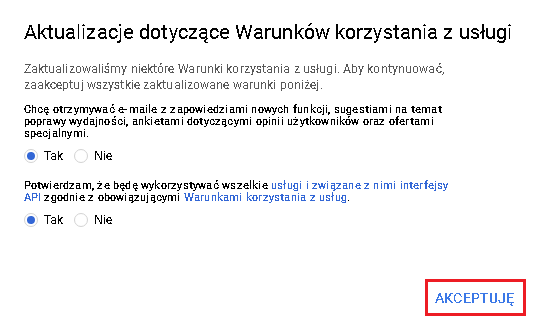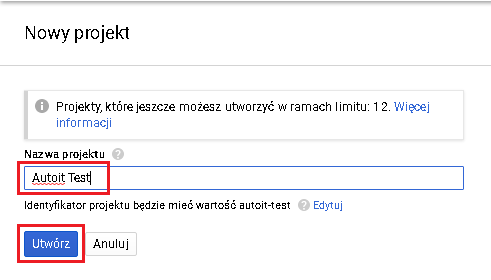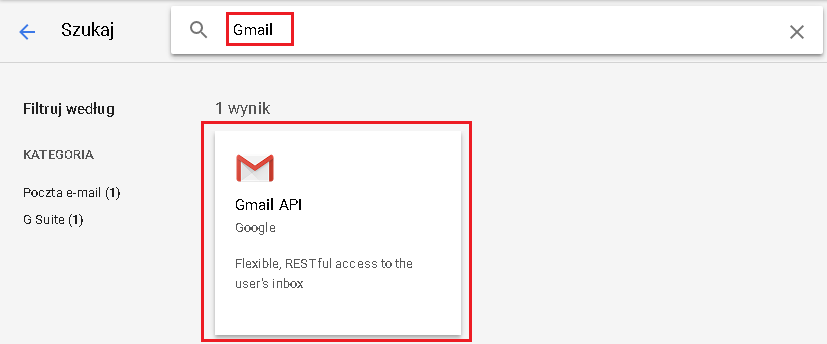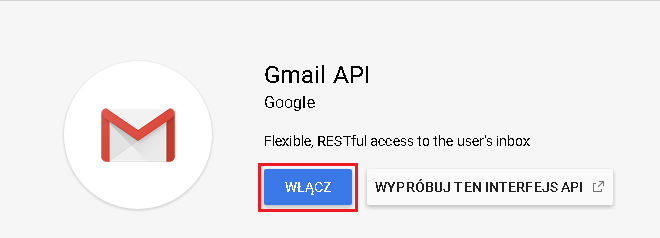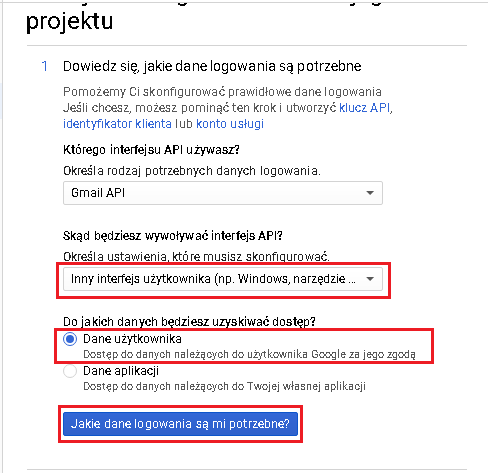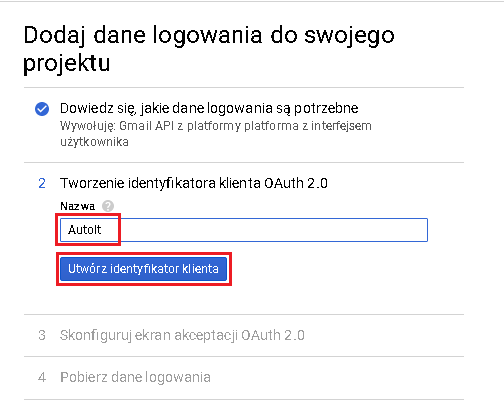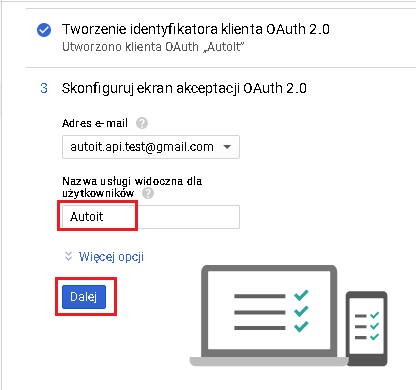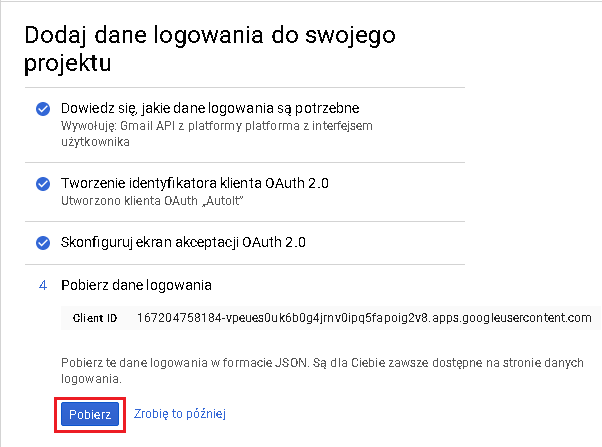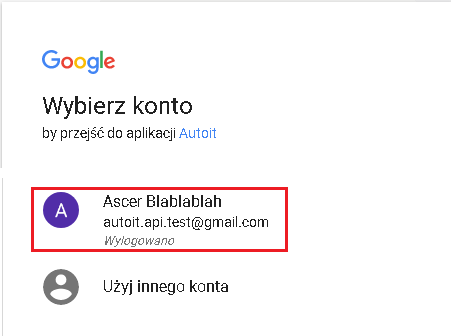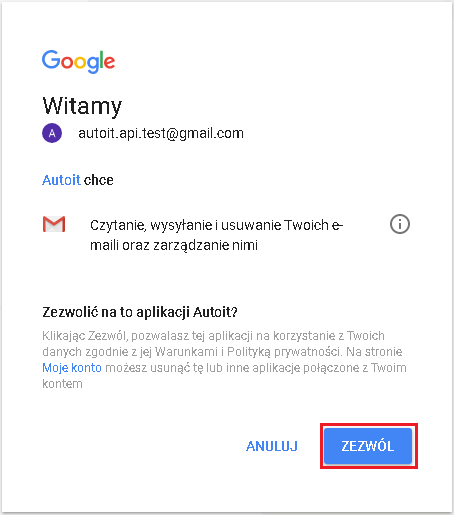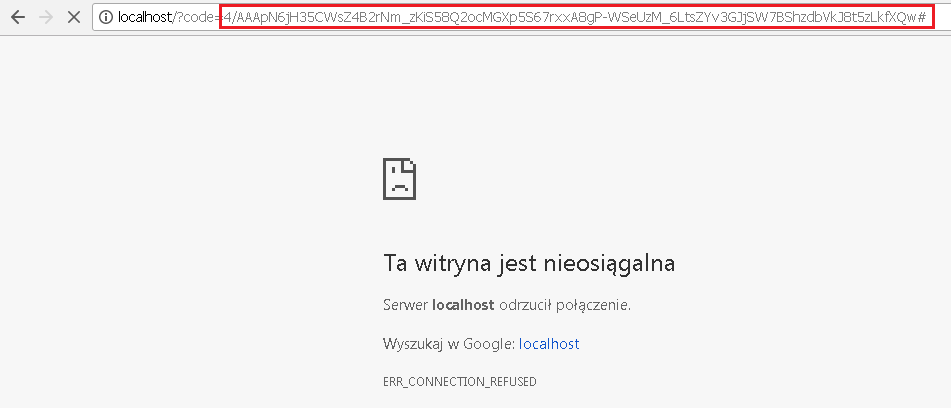Search the Community
Showing results for tags 'oauth'.
-
1. Description. Automate communication with Gmail API using oAuth 2.0 security. 2. Requirements. Google Gmail account. Finished Authorization process. Look here 3. Possibilities. ;======================================================================================================================== ; Date: 2018-02-12, 11:46 ; ; Bug Fixs: 2018-02-17, 7:31 -> Fixed problems with adding items to array and minor bugs. ; ; Description: UDF for using Gmail API interface. This UDF requires oAuth.au3 and Gmail account. ; ; Function(s): ; gmailUsersGetProfile() -> Information about your account. ; gmailUsersLabelsList() -> Get all available labels ids. ex. "INBOX", "UNREAD" ; gmailUsersLabelsGet() -> Get information about specific label id. ; gmailUsersMessagesBatchDelete() -> Delete many messages emails by id. ; gmailUsersMessagesBatchModify() -> Set status for many messages ex. "INBOX", "UNREAD" ; gmailUsersMessagesDelete() -> Totaly delete email from ur account. ; gmailUsersMessagesGet() -> Get all information about specific email. ; gmailUsersMessagesList() -> Get list of last ~100 emails. ; gmailUsersMessagesModify() -> Modify single message. ; gmailUsersMessagesTrash() -> Put email in trash. ; gmailUsersMessagesUntrash() -> Restore email from trash. ; gmailUsersMessagesSend() -> Send email to single or group recipients. ; gmailUsersMessagesAttachmentsGet() -> Download attachment by id. ; ; Author(s): Ascer ;======================================================================================================================== 4. Downloads. oAuth.au3 Gmail API.au3 5. Examples. Sending emails
- 54 replies
-
- gmail
- send emails
-
(and 3 more)
Tagged with:
-
Hi all, I'm not smart enough to clearly understand how to "translate this code into AutoIt call, so I used what I did in the past but it doesn't work properly. Basically I need to receive the Auth Token in order to place further calls. API docs on Paypal site says: curl -v -X POST "https://api-m.sandbox.paypal.com/v1/oauth2/token" \ -u "<CLIENT_ID>:<CLIENT_SECRET>" \ -H "Content-Type: application/x-www-form-urlencoded" \ -d "grant_type=client_credentials" or api-m.paypal.com if using live server. And this is my code (i just canceled the keys received from PP) #include <Array.au3> #include <string.au3> #include <MsgBoxConstants.au3> #Region Paypal Const Global $sURL = "https://api-m.paypal.com" ; /v1/oauth2/token - https://api-m.sandbox.paypal.com #EndRegion Paypal Const #Region keys Global $ClientID = "****" Global $SecretID = "****" #EndRegion keys _Test() Func _Test() Local $sResult = PayPalGet("/v1/oauth2/token") ConsoleWrite("$sResult: " & $sResult & @CRLF) EndFunc ;==>_Test Func PayPalGet($sMethod) Local $sJsonReq = '-u "' & $ClientID & ':' & $SecretID & '"' & _ '\ -H "Content-Type: application/x-www-form-urlencoded" \' & _ '-d "grant_type=client_credentials"' Local $oHTTP = ObjCreate("winhttp.winhttprequest.5.1") $oHTTP.Open("POST", $sURL & $sMethod, False) $oHTTP.SetRequestHeader("Content-Type", "application/x-www-form-urlencoded") $oHTTP.Send(Binary($sJsonReq)) Local $sReceived = $oHTTP.ResponseText Return $sReceived Return $sReceived EndFunc ;==>PayPalGet When I run it I get: $sResult: {"error":"invalid_client","error_description":"Client Authentication failed"} Can you please help me to sort it out? Thanks in advance Marco
-
1. Description. oAuth 2.0 is security system implemented by Google a few years ago. You are able to connect into your Google accounts and manage documents. In this UDF i show you how to pass first authorization process., this allow you to automate most of functions using API interface. 2. Requirements. Google account. oAuth.au3 Download 3. Possibilities ;============================================================================================================ ; Date: 2018-02-10, 14:21 ; ; Description: UDF for authorize your app with oAuth 2.0 Google. ; ; Function(s): ; oAuth2GetAuthorizationCode() -> Get Code for "grant". ; oAuth2GetAccessToken() -> Get "access_token" and "refresh_token" first time. ; oAuth2RefreshAccessToken() -> Get current "access_token" using "refresh_token". ; ; Author(s): Ascer ;============================================================================================================ 4. Enable your Google API. 4.1. Video Tutorial not mine! YouTube 4.2 Screenshots from authorization process (Polish language) Go to https://console.developers.google.com/apis/dashboard and accept current rules. Next create an new project Enter name of you new project and click Create Google will working now, please wait until finish. Next go to enable your API interface, we make if for Google Take "Gmail" in search input and after click in found result. Click Enable interface, Google will working now. Create your login credentials Select Windows Interface (combobox), User credentials (radio) and click button what is need bla bla Type name of a new client id for oAuth 2.0 and click Create a new Client ID. Next configure screen aplication, type some name and click Next. Google will working now. Last step on this website is download source with your credentials in *Json format. Now you received a file named client_id.json, it's how it look in Sublime Text: 5. Coding. Now we need to call a some function to get access code. #include <oAuth.au3> Local $sClientId = "167204758184-vpeues0uk6b0g4jrnv0ipq5fapoig2v8.apps.googleusercontent.com" Local $sRedirectUri = "http://localhost" oAuth2GetAuthorizationCode($sClientId, $sRedirectUri) Function will execute default browser for ask you to permission. Next Google ask you to permission for access to your personal details by application Autoit Now you can thing is something wrong but all is ok, you need to copy all after code= . It your access code. Let's now ask Google about our Access Token and Refresh Token #include <oAuth.au3> Local $sClientId = "167204758184-vpeues0uk6b0g4jrnv0ipq5fapoig2v8.apps.googleusercontent.com" Local $sClientSecret = "cWalvFr3WxiE6cjUkdmKEPo8" Local $sAuthorizationCode = "4/AAAPXJOZ-Tz0s6mrx7JbV6nthXSfcxaszFh_aH0azVqHkSHkfiwE8uamcabn4eMbEWg1eAuUw7AU0PQ0XeWUFRo#" Local $sRedirectUri = "http://localhost" Local $aRet = oAuth2GetAccessToken($sClientId, $sClientSecret, $sAuthorizationCode, $sRedirectUri) If Ubound($aRet) <> 4 then ConsoleWrite("+++ Something wrong with reading ResponseText." & @CRLF) Exit EndIf ConsoleWrite("Successfully received data from Google." & @CRLF) ConsoleWrite("access_token: " & $aRet[0] & @CRLF) ConsoleWrite("expires_in: " & $aRet[1] & @CRLF) ConsoleWrite("refresh_token: " & $aRet[2] & @CRLF) ConsoleWrite("token_type: " & $aRet[3] & @CRLF) Important! When you received error 400 and output says: Invalid grant it means that your previous generated access_code lost validity and you need to generate new calling previus code. When everything is fine you should received a 4 informations about your: access_token, expires_in, refresh_token and token_type. Access_Token time is a little short so you need to know fuction possible to refresh it (tell Google that he should generate a new Token for you) #include <oAuth.au3> Local $sRefreshToken = "1/ba8JpW7TjQH3-UI1BvPaXhSf-oTQ4BmZAbBfhcKgKfY" Local $sClientId = "167204758184-vpeues0uk6b0g4jrnv0ipq5fapoig2v8.apps.googleusercontent.com" Local $sClientSecret = "cWalvFr3WxiE6cjUkdmKEPo8" Local $sRedirectUri = "http://localhost" Local $aRet = oAuth2RefreshAccessToken($sRefreshToken, $sClientId, $sClientSecret) If Ubound($aRet) <> 3 then ConsoleWrite("+++ Something wrong with reading ResponseText." & @CRLF) Exit EndIf ConsoleWrite("Successfully received data from Google." & @CRLF) ConsoleWrite("access_token: " & $aRet[0] & @CRLF) ConsoleWrite("expires_in: " & $aRet[1] & @CRLF) ConsoleWrite("token_type: " & $aRet[2] & @CRLF) 6. Finish words If you followed all this above steps im sure that you received all informations required for coding your Google API (Gmail, Dropbox, YouTube, Calender etc. See next thread: [UDF] Gmail API - Email automation with AutoIt!
-
I've been trying all day to get a "request token" from the dropbox rest-api. Basically I'm trying to perform step 1 at https://www.dropbox.com/developers/blog/20/using-oauth-in-plaintext-mode: " 1. Make an API call for a request token: POST https://api.dropbox.com/1/oauth/request_token Your HTTP request should have the following header: Authorization: OAuth oauth_version="1.0", oauth_signature_method="PLAINTEXT", oauth_consumer_key="<app-key>", oauth_signature="<app-secret>&" The response body will be a url-encoded string: oauth_token=<request-token>&oauth_token_secret=<request-token-secret> Parse out the request token and secret and save them somewhere." I'm really struggling with how to send the header properly. Copying the example at http://brugbart.com/http-post-request-autoit, I have: ; The data to be sent $sPD = 'Authorization: OAuth oauth_version="1.0", oauth_signature_method="PLAINTEXT", oauth_consumer_key="h9y2pwy1nbvzy5e", oauth_signature="imrgkd8i80c2b8g&"' ; Creating the object $oHTTP = ObjCreate("winhttp.winhttprequest.5.1") $oHTTP.Open("POST", "https://api.dropbox.com/1/oauth/request_token", False) $oHTTP.SetRequestHeader("Content-Type", "application/x-www-form-urlencoded") ; Performing the Request $oHTTP.Send($sPD) ; Download the body response if any, and get the server status response code. $oReceived = $oHTTP.ResponseText $oStatusCode = $oHTTP.Status If $oStatusCode <> 200 then MsgBox(4096, "Response code", $oStatusCode) EndIf ; Saves the body response regardless of the Response code $file = FileOpen("Received.html", 2) ; The value of 2 overwrites the file if it already exists FileWrite($file, $oReceived) FileClose($file) I think my Authorisation string should be used in the "SetRequestHeader" function, but am worried about replacing the "content-type" already there as it looks important. If anybody can help it would be an enormous help



